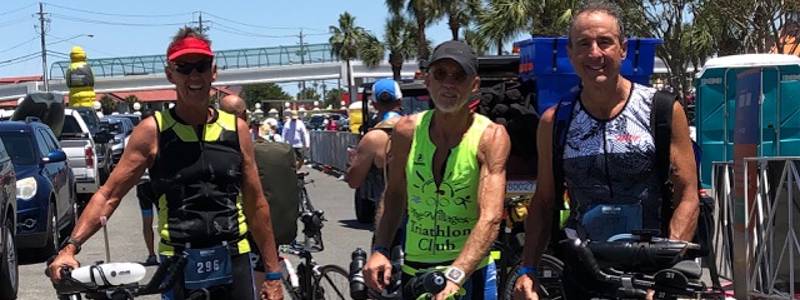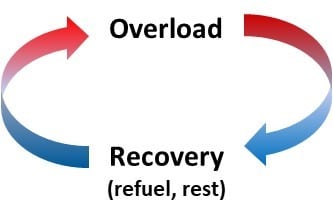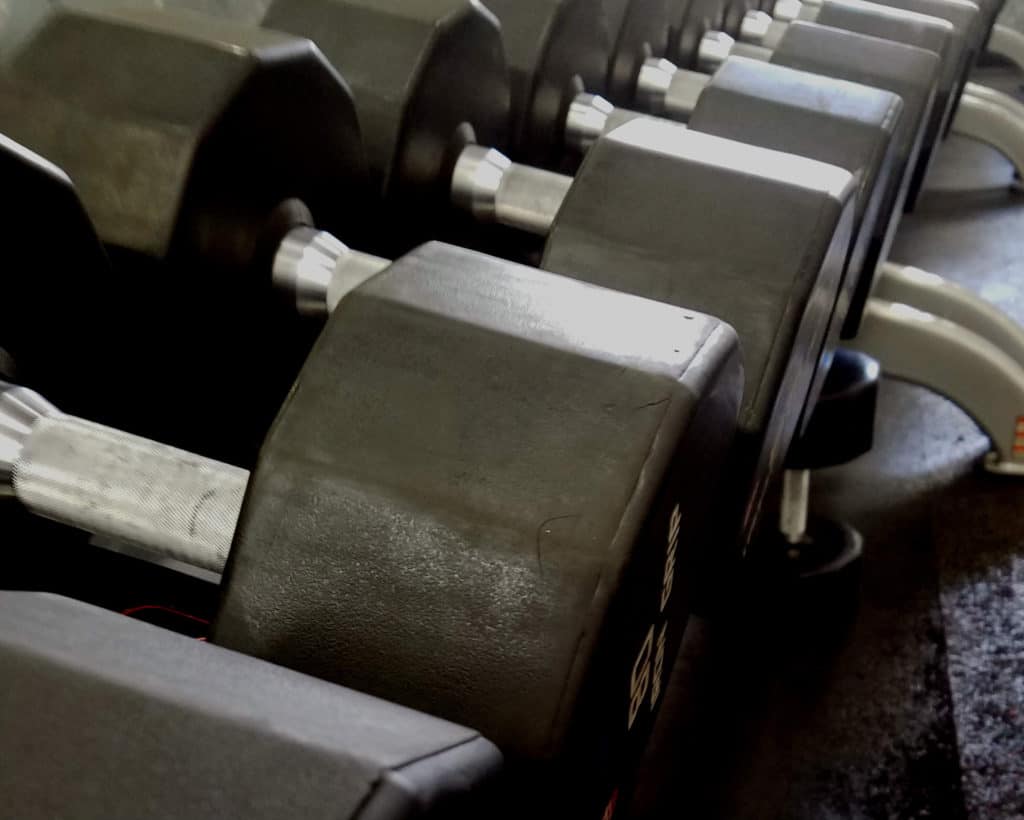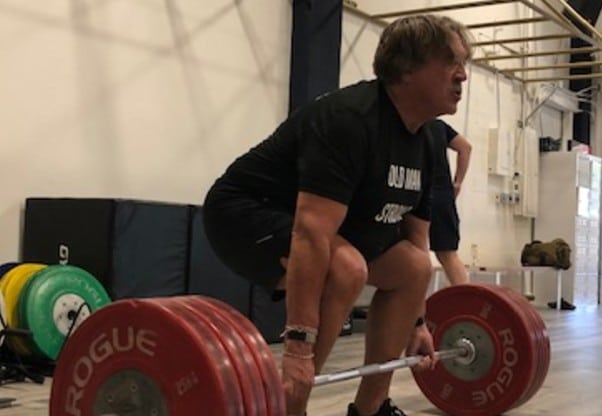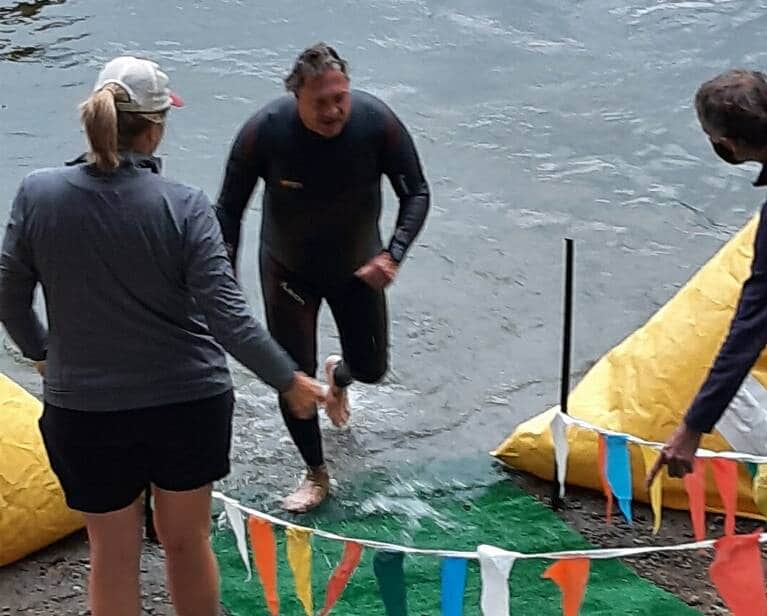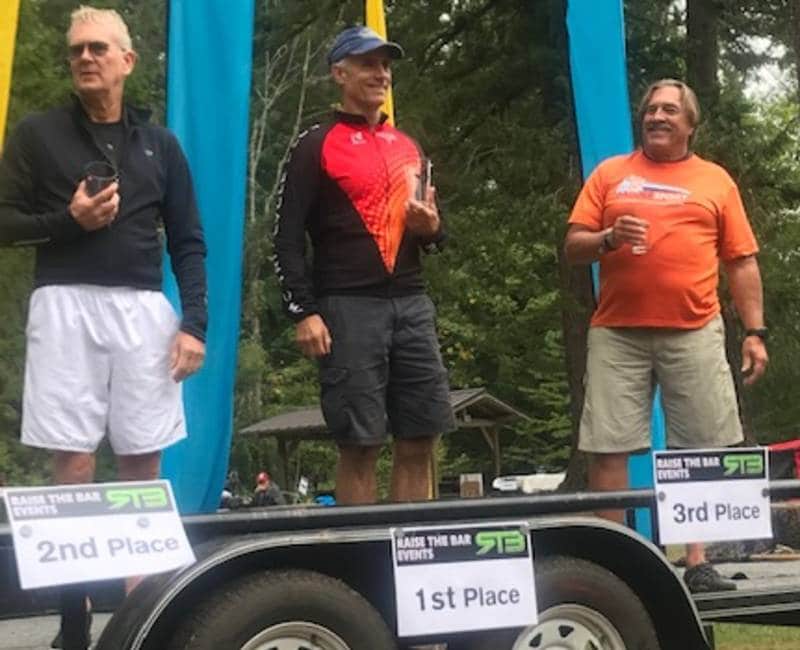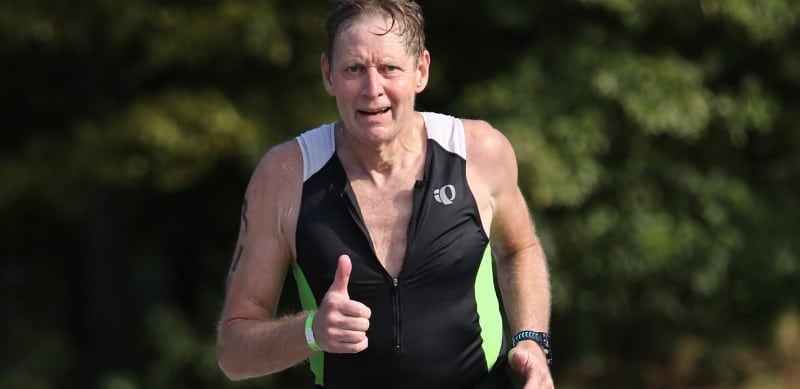A Healthy Retirement Plan – Mark Bartolomeo’s Story
Imagine being retired or near retirement and at the start of your first triathlon. Or, the triathlon could be the first of a longer distance. Are you feeling prepared? Or are you worried if you have trained enough?
According to Mark Bartolomeo, you can not only feel, but be, mentally and physically prepared for the triathlon using the same disciplines that got you to this place in life. Goal setting and planning followed by executing the plan are just as important for triathlon as they are for other parts of our lives, including work.
That has been Mark’s approach. And, it surely seems to work as he continues to become more fit and go longer triathlon distances in retirement.
Mark Bartolomeo’s Path to Triathlon
When I first met him in April 2021, Mark Bartolomeo was in the final stages of preparing for Ironman 70.3 Gulf Coast, his first in-person half Ironman. Within the next month, he completed this race.
Five months later, when we spoke to gather information for this post, Mark was training for Ironman Florida. Just before finishing this post, Mark completed Ironman Florida, his first full distance triathlon.
How did Mark arrive at a place where he is achieving more in triathlon with age?
Mark tracks the beginning of this path involving triathlon to around age 55. He realized it was time to take off some of the extra weight he had put on. It was also time to change what he called an “unhealthy lifestyle”.
Mark started running, sometimes on a treadmill and sometimes outside. His running shoes became a regular part of luggage when traveling for work. He also started eating better, prioritizing high quality whole foods.
Over three years, Mark shed 65 lbs.
What To Do With Extra Time in Retirement?
After retiring from full-time work as an executive in the wireless communications industry, Mark found he had “a lot of extra time”.
He told me “I asked myself ‘what am I going to do with this time?'”.
Besides running, Mark had, in his earlier years, enjoyed biking. Growing up on Chesapeake Bay, he had also spent a lot of time in and on the water. He had even taught watersports in his teenage years. Retirement gave him time to continue running while resuming biking and swimming.
He saw the unique benefits of mixing swimming, biking, and running for “a full-body workout”. Soon, Mark put the three sports together, completing his first triathlon, a sprint distance race at Fort Island Gulf Beach near Crystal River, Florida.
The experience was enjoyable. Part of this came from the accomplishment, but some of it came from the venue. Mark calls this triathlon “beginner-friendly”, with its “calm swim and flat roads for biking and running.”
Mark followed his first triathlon with several more sprint triathlons, including more at Crystal River and others in Clermont, Florida. He eventually also did a couple of Olympic distance races.
Distances for each of the legs of an Olympic distance triathlon are roughly twice those for the sprint distance. For Mark, this was a reasonable step toward a longer term goal to do Ironman races.
Taking On New Challenges
Over the next two years, Mark trained for a half Ironman triathlon. With most in-person triathlons being canceled in 2020, Mark completed his first half Ironman virtually during the pandemic.
While there were many negatives associated with COVID-19, Mark found at least one positive.
Auto traffic in The Villages, Florida, where Mark had moved when he retired, was almost non-existent. Now, he could ride safely on the roads within The Villages for both training and the virtual race.
Related post: Bright Spots in Triathlon From COVID Restrictions
As racing in the USA began to re-open in 2021, Mark put this training to the test with the Gulf Coast Ironman 70.3.
Not stopping there, he continued to train for and complete Ironman Florida in early November.

Triathlon Training With Coaches and Friends
Retirement has given Mark more flexibility in training. This has made it easier to train with a group of like-minded, similarly motivated individuals. The extra time has also allowed him to train longer and with greater intention and to recover properly.
Relearning to Swim
Early in his triathlon journey, Mark realized he needed help with swimming. For this, he involved a swim coach who helped him develop a proper stroke and breathing technique.
“Biking and running performance are mostly about physical endurance and mental toughness. In contrast, swimming is the one leg of triathlon for which speed is most affected by technique. You can tell those who were Olympic contenders and college swimmers.”
Building Endurance for Triathlon Performance
Besides involving a human coach for swimming, Mark has found virtual coaching through TrainingPeaks to be effective in both cost and results.
With TrainingPeaks, the athlete (that’s you if you are preparing for a triathlon) completes a questionnaire showing the time available for training. You also indicate the distance (e.g. sprint, Olympic, etc.) and date of the race for which you are training.
With this information, the virtual coach produces an initial training plan. The virtual coach sends workouts to a linked smart watch and bike computer. Results from the workout (heart rate, pace, etc.) are then uploaded to the TrainingPeaks website. Here, they are analyzed and used to track progress and adjust future workouts, all with an eye to the athlete having their best performance on race day.
The cost for this training is reasonable (tens of dollars for the entire plan), based on the number of weeks in the training plan.
Training With a Group
Mark trains with a group within The Villages Triathlon Club who are all preparing for longer distance triathlons. The weekly TrainingPeaks-generated workout plan is flexible so he can adapt it to the schedule of others in this group.
However, a typical training week for Mark and the core group who are training for Ironman distant triathlons looks like this.
- Sunday – long run of 13 or more miles followed by a 2,500 yard swim.
- Monday – short (1-1/2 hour) bike ride.
- NOTE: Mark does some of these bike rides on a smart trainer linked to his bike computer.
- Tuesday – speed run comprising a 10k run at a fast pace.
- Wednesday – short (1-1/2 hour) bike ride.
- Thursday – hill run comprising a 10k run in an area with moderately steep hills.
- Friday – 80 to 100 mile bike ride followed by a 6 to 10-mile run.
- Saturday – long (2,500 yard) open water swim.
Training with a group that includes life long Ironman triathletes near his age has unique benefits. Experienced senior triathletes with whom Mark trains have helped him with the technical aspects of training. They have also helped him develop mental toughness needed to perform in stressful conditions that can arise in both training and racing.
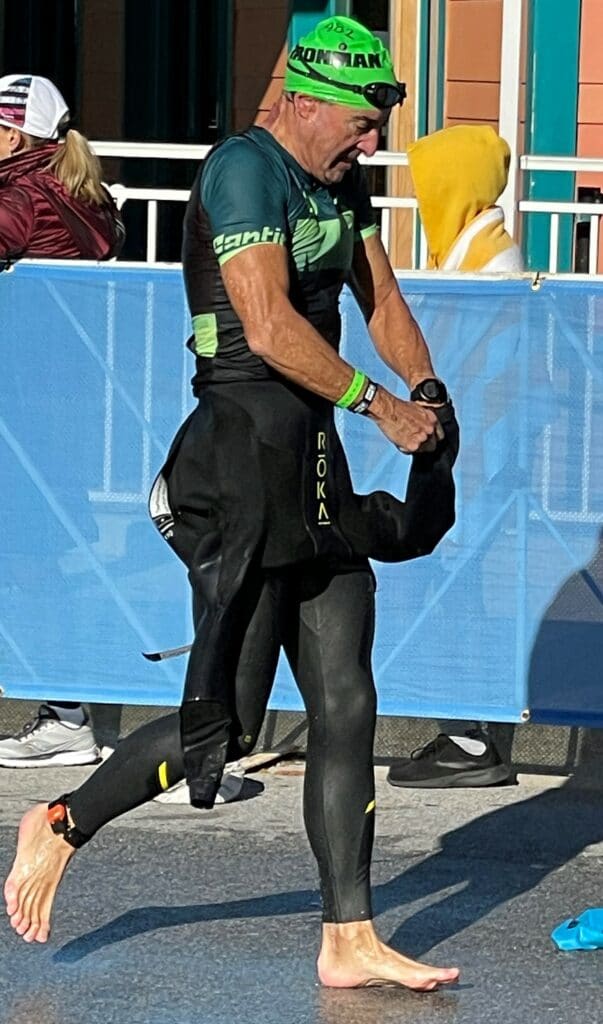
Mark’s Advice – ‘Start Short’
According to Mark, triathlon is a sport in which nearly everyone can take part. Along the way, you too will benefit from the all-around exercise accompanying swimming, biking, and running.
One of the wonderful features of the sport of triathlon is that there are distances for every level of experience, fitness, ability, and desire. Many accomplished sprint and Olympic triathletes will not consider doing an Ironman distance race. And, I have met senior triathletes who do Ironman triathlons but have no interest in sprint distance race because of the overall faster pace.
If you are still not sure, start with a “beginner-friendly” super sprint or sprint triathlon. Let us know in the Comments below if you would like help with a training plan.
It’s Not All About Triathlon
Triathlon training must include time for rest and recovery. Mark has found other activities to fill these times, including taking classes at The Villages Enrichment Academy. Occasionally, you can also find him hitting the golf ball around the many courses within The Villages.
Your Turn
I hope Mark’s story, one of starting triathlon later in life and continuing to push his personal limits in retirement, encourages you.
Share your questions and comments about Mark’s triathlon story below.
Also, let us know in the Comment section below if you are interested in sharing your triathlon journey with our community.

